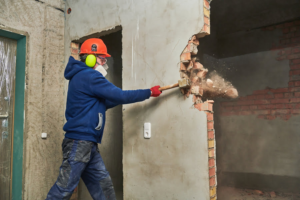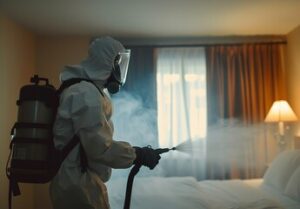Unlike ordinary furniture movers, piano movers know how to move your piano. They also understand how to maneuver the instrument up and down stairs.
Trying to move a baby grand piano without professional help is risky. Even a small mistake can ruin the musical instrument and cause injuries. Piano movers have the necessary experience to avoid these problems. Contact Baby Grand Piano is Moving Charleston now!

If you’re moving a baby grand piano, you’ll need to take special care to protect it from damage. This process is complex and requires a lot of time. It’s also important to prepare the path ahead of time to make sure it can accommodate the piano and avoid any obstacles that might prevent a smooth move. In many cases, this involves removing doors and clearing the area.
Before the actual move, you’ll want to start by wrapping the entire piano in thick moving blankets. This will help to protect it from scratches and dents during the move. Then, you’ll need to secure the blankets with ratchet straps or heavy-duty tape. Make sure you’re covering the whole body of the piano, including any sharp corners. You should also cover the keys with a smaller blanket or padding to keep them from being damaged during the move.
Once the piano is covered in protective padding, you can begin removing any detachable parts that need to be removed. Depending on the type of piano, this may include the lid, pedals, music rack, and lyre. Be sure to carefully remove any hinges that might cause damage during the move. You should also wrap any loose parts in a blanket or stretch wrap for extra protection.
After removing all the detachable parts, it’s time to prepare the body of the piano for transportation. First, you’ll need to wrap the entire instrument in blankets and secure them with ratchet straps or heavy-duty packing tape. Then, you’ll need to load the piano onto a piano board or skid board. Ideally, you’ll have one person guiding the piano from the top and two or more people steadying it from the bottom to prevent it from tipping during transport.
The next step is to load the piano into a truck or van. Make sure the truck or van is large enough to fit the piano and all of its accessories. Lastly, be sure to strap the piano tightly to avoid any movement during the drive. Once you’re at your new home, unload the piano and set it up in a safe place. After the piano is positioned properly, be sure to schedule a professional tuning. The vibrations of the move can cause it to lose its tune, and you’ll want to ensure that it’s tuned correctly before playing it again.
Disassembly
If you’re moving a baby grand piano up or down stairs, it is best to disassemble the instrument prior to transport. Doing so minimizes the risk of damage and makes the process much easier for the movers. The movers will wrap the piano and disassembled parts in protective pads and stretch wrap to ensure that the instrument is not damaged during transit.
The first step is to remove the lid. Depending on the type of piano, it may be a good idea to remove the lyre and pedals as well. Once the piano is disassembled, the movers will wrap it in large moving blankets and secure the wrap using tape that won’t harm the surface of the piano. The movers will then place the piano on a dolly and load it into the truck.
When loading the piano onto a truck, it is important to use a plank to create a ramp for seamless transition into the vehicle. This is especially crucial if the piano will be transported across uneven terrain or over a long distance. The movers will then use ratchet straps to tie the piano to the slats found on the walls of the truck. They will also wrap the body of the piano in moving pads and stretch wrap to minimize the risk of scratching or damaging the paint.
The movers will then move the piano onto the truck and load it in the center so that it does not shift during transport. They will then wrap the remaining legs and legs in padding and stretch wrap to protect them from friction against other surfaces during transport. Once the piano is on the truck, it will be secured with ratchet straps and tied to the sides of the vehicle using blankets. The movers will then transport the piano to its new location where it will be unloaded and reassembled. Generally, it will take several hours to transport a baby grand piano up or down steps and it is recommended that movers have at least two people to handle this task.
Moving
If you have a baby grand piano, moving it requires extensive planning. The best way to move a piano is to hire professional movers. This will save you time and money, as well as prevent damage to the instrument. The process may seem daunting, but it can be done safely with proper preparation.
First, you need to disassemble the piano. This is an important step because the piano is very heavy and requires a lot of strength to lift. Moreover, the legs of a grand piano are often fixed to the body using screws and bolts. Therefore, it is better to remove them before the move. This will also make it easier to maneuver the piano through narrow doorways and hallways.
Once the piano is disassembled, it should be thoroughly wrapped in blankets to protect it from damage during the move. Next, the piano needs to be placed on a dolly that is rated for the weight of the piano. Using a regular furniture dolly is not recommended because it can cause damage to the piano and hurt you or your helpers.
During the actual move, be sure to take your time and go slowly. It is crucial to avoid rushing so that you can minimize the risk of damage and injuries. In addition, you should always be aware of your surroundings. Keep an eye out for obstacles, such as stairs or narrow doorways. Also, be careful about weather conditions, as snow or rain can make the move more difficult.
You should also wear comfortable shoes and use a harness to secure yourself to the piano. This will ensure that you don’t fall off during the move and hurt yourself or other people. Finally, be sure to use ratchet straps to tie the piano down.
Once the piano is moved to its final destination, it should be reassembled and tuned. You should also clear the new home’s floor to prepare it for the piano. This will ensure that the piano does not damage the floor or get wet during the move. You should also remove any debris, such as wood scraps and old hardware from the piano.
Reassembly
Pianos are one of the hardest household items to move. Their size, weight, and awkward shape make them difficult to maneuver. This is why it’s a good idea to hire a professional mover when moving a baby grand piano. Professional movers are well-versed in the special techniques required to move this delicate instrument without causing damage. They will assess the piano’s location, route, and any obstacles that may pose a threat to its condition. They will also remove doors and other obstructions to allow for a smoother, more efficient move.
The first step in preparing to move a baby grand piano is disassembling it. This process is tedious and time-consuming, but it’s necessary to protect the instrument during the move. Once the piano is disassembled, it should be wrapped with blankets to prevent scratches and other damage. It’s also important to keep track of the screws that are removed so they can be put back in place later.
Next, the piano’s legs and lyre must be removed from the body of the instrument. This should be done slowly and carefully. The movers should be careful not to scratch the piano’s finish or the inside of the lid. The movers should also wrap the pedals and lyre with blankets to protect them during the move. Finally, the movers should remove the piano’s lid and secure it with a heavy duty tape.
Once the piano is removed from the body, it can be placed on a dolly and loaded onto the truck. The movers should be sure to use the correct dolly for the piano model. They should also pad the dolly to prevent scratches and dents. Once the piano is on the truck, the movers should wrap it with blankets to protect it from damage during transit.
When the piano arrives at its new home, it will need to be reassembled and tuned. Once the movers are finished, the piano will be ready for its new owner to enjoy. Whether moving an old spinet piano across the city or a concert-model from overseas, professional movers are well-versed in the steps to safely and successfully transport this delicate instrument.








